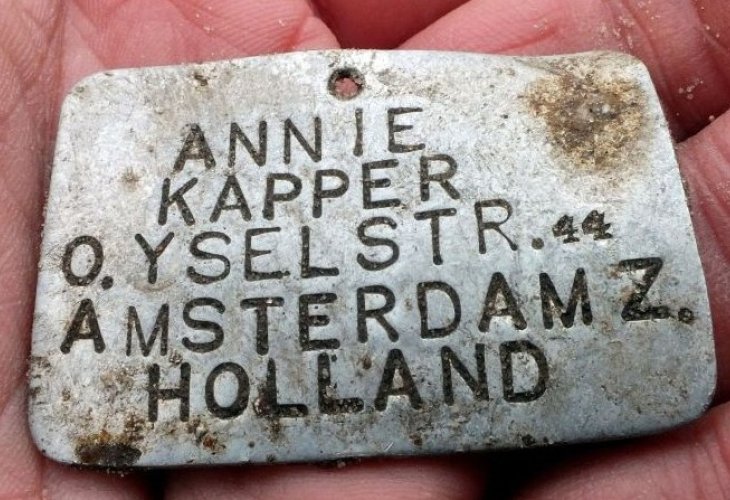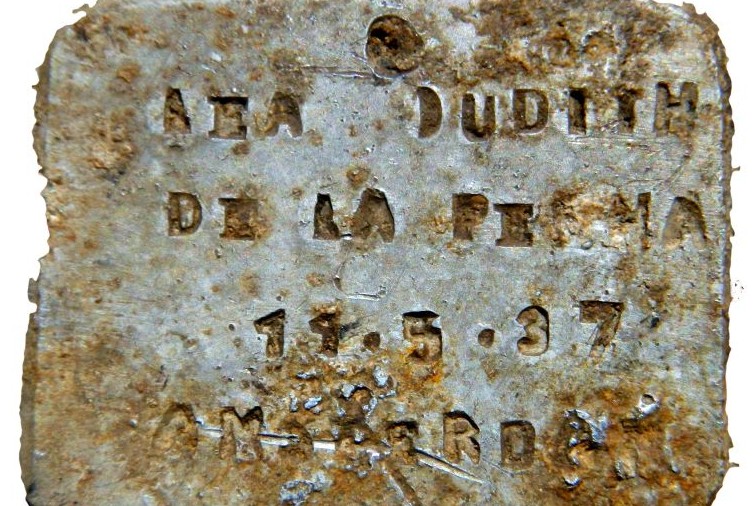Heartwarming Discoveries: Children's Identification Tags Found at Sobibor
The personal ID tags of four Jewish children, sent to the Sobibor extermination camp in Poland, were uncovered in an archaeological dig. Archaeologist Yoram Haimi shares, "I've been excavating Sobibor for ten years, and this was my hardest day."
 Annie Kapper's identification tag (Photo: Yoram Haimi)
Annie Kapper's identification tag (Photo: Yoram Haimi)Chilling Discoveries from Sobibor Extermination Camp in Poland: Personal ID tags of four children aged 5 to 11 from Amsterdam, Netherlands were discovered during archaeological excavations at the camp. These tags, made of metal and worn around the neck, displayed their names, birthdates, and the city they came from.
The extraordinary archaeological excavation, conducted in preparation for a new visitor center at the camp, involves a team of archaeologists led by Witek Mazurek from Poland, Yoram Haimi from the Israel Antiquities Authority, and Ivar Schute from the Netherlands, supported by local residents.
The children whose tags were found are Lea Judith Delepinea, Dedy Zek, Annie Kapper, and the child David Yehuda, may their memory be a blessing.
 Lea Judith Delepinea's tag (Photo: Yoram Haimi)
Lea Judith Delepinea's tag (Photo: Yoram Haimi)"As far as we know, these child name tags were only found at Sobibor, not known from any other site," said archaeologist Yoram Haimi. "It’s fascinating to see that the tags differ from one another, suggesting they weren’t part of an organized initiative, but rather personal efforts by parents trying to ensure their children could be identified amid the chaos of World War II."
To gather information about the children, researchers contacted Camp Westerbork, which was a transit camp for Jews deported from the Netherlands to Eastern Europe during the Holocaust and now serves as a memorial center. According to Haimi, "The metal tags of Lea, Dedy, Annie, and David allowed us to put faces and stories to names that had been anonymous lines in Nazi records. This archaeological dig gives us a chance to tell the victims' stories and honor their memory."
"I’ve been digging at Sobibor for ten years, and this was my hardest day," added Haimi. "We stood with the discs on site, near the crematoriums, called the center, and gave them the names. The response was immediate. We received pictures of smiling, gentle children on our phones. The hardest part was learning that one of the children, whose tag we held, arrived at Sobibor in a transport of children aged 4 to 8 sent here to die alone. I looked at their pictures and asked myself, how could anyone be so cruel?"

